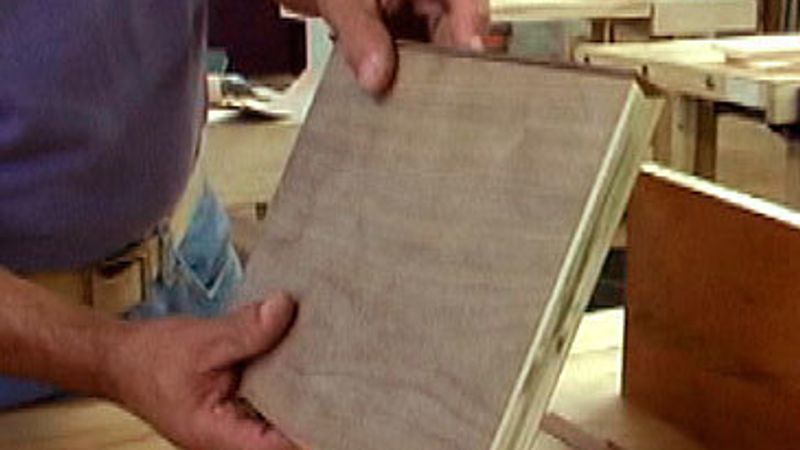A Durable Low-Profile Edging For Plywood
A V-groove with matching solid-wood edging is a durable solution for disguising a plywood edge
In this video, furniture maker and woodworking instructor Mario Rodriguez demonstrates an advanced method for edging veneer-grade plywood. This method offers a couple of important benefits over easier methods described in his companion video. The V-groove has an extremely low profile at the seam, making it nearly invisible; and the increased thickness toward the center offers more durability than you get with edge-banding or even the 1/8-in.-thick treatment.
Shape the edging
Shape the solid-wood edging, using a board wider than you need, which makes the process easier and safer. First mark the exact center of the edging material with a marking gauge, then transfer that mark to the bottom edge of a sacrificial plywood fence. Set the tablesaw blade to an angle of 25°, and set up the fence so that the spinning sawblade advances into the sacrificial fence just below the scribed line. Once this setup is ready, you can shape as many edgings you need, beveling the top and bottom each piece of lumber by flipping and turning each board around and passing it against the sawblade.
Groove the plywood edge
To cut the V shape into the edges of the plywood, leave the blade set at 25° and shift the fence to the other side of the blade. As with any finicky setup, it’s best to have some scraps on hand to make adjustments as needed until the cut is aligned. When all of the angled cuts have been made, return the blade 90° and rip the final pieces of V-molding from all of the lumber that you shaped.
Glue up with masking tape
You can use masking tape to hold the V-molding in place when you glue it up. Once the glue sets, trim the edges with block plane and a cabinet scraper.
For more on this topic, read Rodriguez’s article Six Ways to Edge Plywood or watch companion videos, Edging Plywood Made Easy or Trim Pylwood Edging Flush.





















Log in or create an account to post a comment.
Sign up Log in